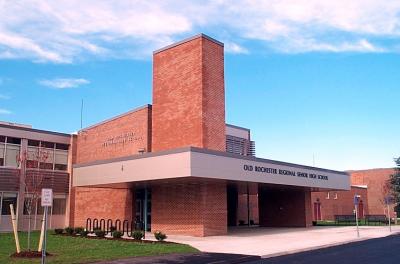Technology class developing sensors to target bog health
Months after winning the state championship (and $25,000), Old Rochester Regional High School was told that it would not be advancing to the nationwide finals of Samsung's "Design for Tomorrow" contest. Old Rochester technology teacher MJ Linane isn't overly worried about it, though.
When submitted, the technology class's project was described as a specialized drone that would help small-scale cranberry growers monitor the moisture content of their bogs for targeted, effective watering.
The project netted Old Rochester the Massachusetts state championship, and a $25,000 award. The prize money was intended to be used to buy drone packages, but as the class found out—drones aren't necessarily what small-scale cranberry growers need.
"[The competition project] was submitted as a drone project, and I think the reason that it may not have moved forward is that it ended up not being so much of a drone project," Linane said.
What the technology class discovered, instead, was a "much more practical" smartphone app. "Originally we were going to fly the drone over the bog and have it fly down and take samples in different areas," Linane said. "And then I thought—what's the point of repeatedly poking the bogs? They aren't moving. Wouldn't it be cheaper to just use sensors?"
Moving off of that idea, technology students quickly came up with the "SmartBog" smartphone application, which they designed themselves. To use the app, growers would bury sensors just below the surface of the bog, where the sensors could monitor moisture content in the soil. The sensors would feed directly into a central monitor, which would store all the data. To read the feedback from the sensors, the grower would simply need to have the SmartBog app on a smartphone.
Linane said the device would make small-scale cranberry growing much more efficient. "We found out that only about 20 percent of small-scale cranberry growers have an automated watering system," he explained. "The others drive to the bog, they spend frost nights there, they're turning the water on and off manually. They test the edge of the bogs and make a bit of a guess as to whether it needs more water or not. This would make it so much easier to target which areas need the help."
Linane said that the technology class visited the Cranberry Experiment Station in Wareham, and learned the productivity of a crop can drastically rise when individual plant needs are monitored. "If a grower knows which parts of the bog need watering, even if they are turning pumps on manually, that's a benefit."
The cost of the sensors would be significantly cheaper than a drone as well—maybe $100-$200 to set up and wire the system.
Eventually, Linane added, the students would like to figure out how to program the sensors to read more information about the cranberry plants and the soil—such as reading the nutrient balance of the soil, or its pH level.
Several members of the technology class are continuing on with creating the sensors, and Linane hopes to collaborate with local small-scale growers on testing out the sensors in the future. He noted that he is hoping to host an informational session for growers toward the end of the school year.














